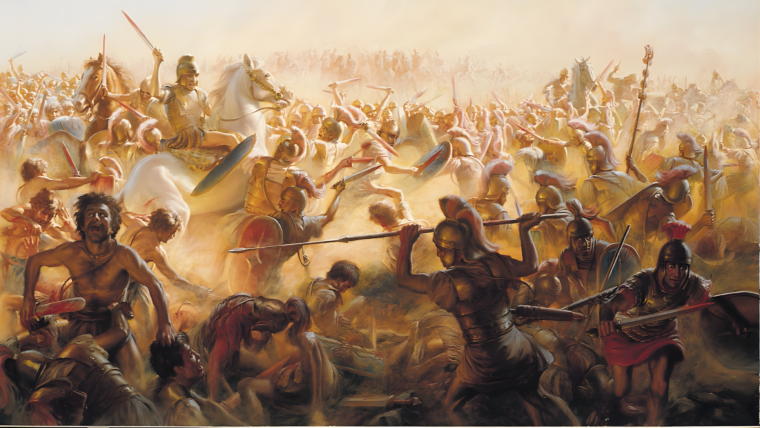
How Hannibal Hammered the Roman Army
Gisgo, a commander in the Carthaginian army, sat on his horse nervously as he waited with other members of the staff for their general, the now-famous Hannibal, to complete his final inspection. Read more

Gisgo, a commander in the Carthaginian army, sat on his horse nervously as he waited with other members of the staff for their general, the now-famous Hannibal, to complete his final inspection. Read more
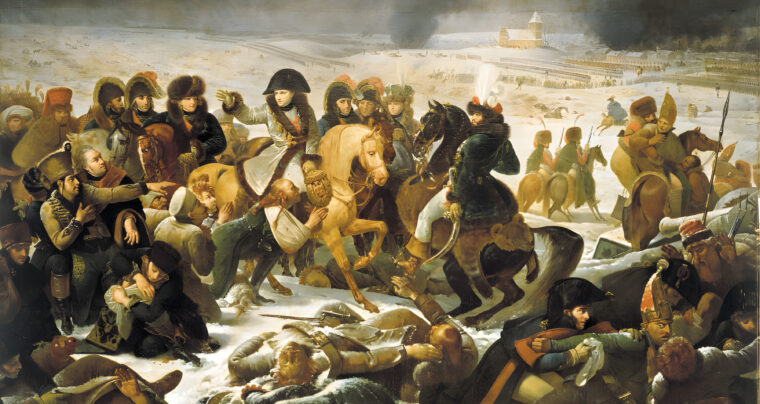
Following the French Army’s brilliant victories at the twin battles of Jena and Auerstadt on October 14, 1806, the Emperor Napoleon Bonaparte subsequently launched his Grande Armée in a devastating pursuit of the remnants of the Prussian Army. Read more
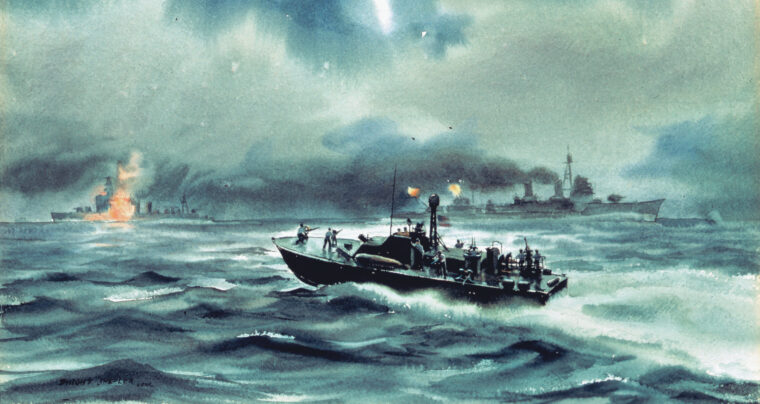
In 1944, following the American victories in the South Pacific of operational commanders General Douglas MacArthur in western New Guinea and Admiral Chester Nimitz in the Marianas, American planners considered the next offensive against Japan’s empire. Read more
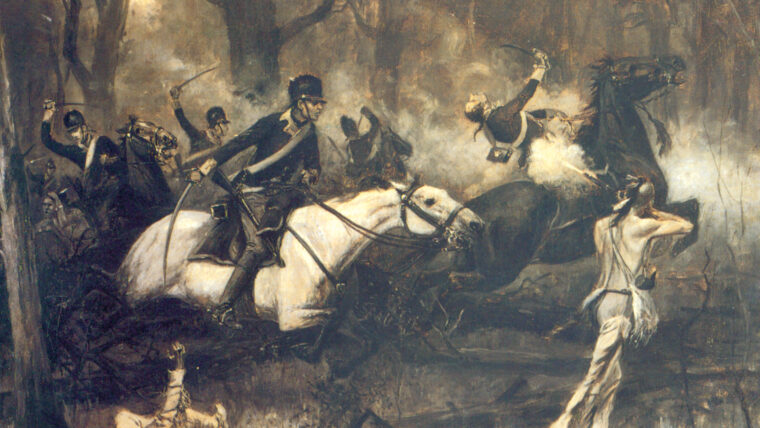
On a December day in 1793, Maj. Gen. Anthony Wayne led a column of soldiers to a spot deep in the Ohio wilderness not far from the Wabash River. Read more
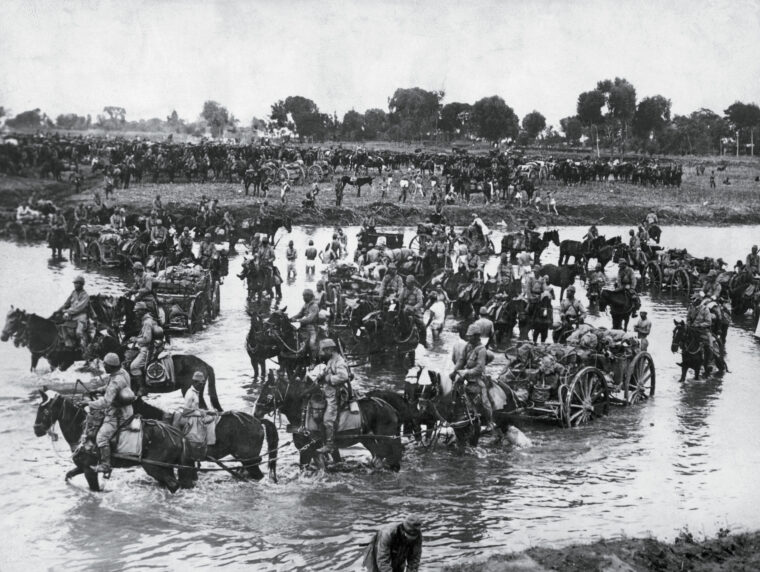
In May 1939, Mongolian herdsmen and part-time militia cavalry crossed the Khalkhin Gol, or Halha, River near the village of Nomonhan in Manchurian-claimed territory. Read more

For nearly a century, England and the Netherlands were longtime allies in the Eighty Years’ War against the Spanish Empire. Read more

In February 1945, General Douglas MacArthur was poised to begin one of the great battles of his career. Read more
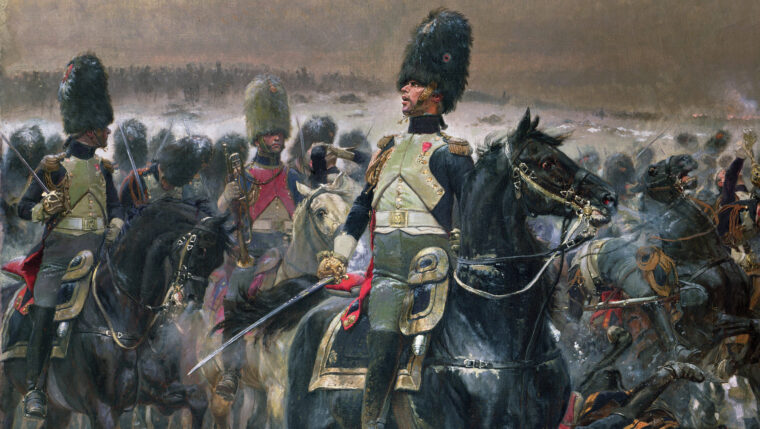
After decisively crushing Austrian and Russian armies in the 1805 campaign, French Emperor Napoleon became the undisputed master of Central Europe. Read more
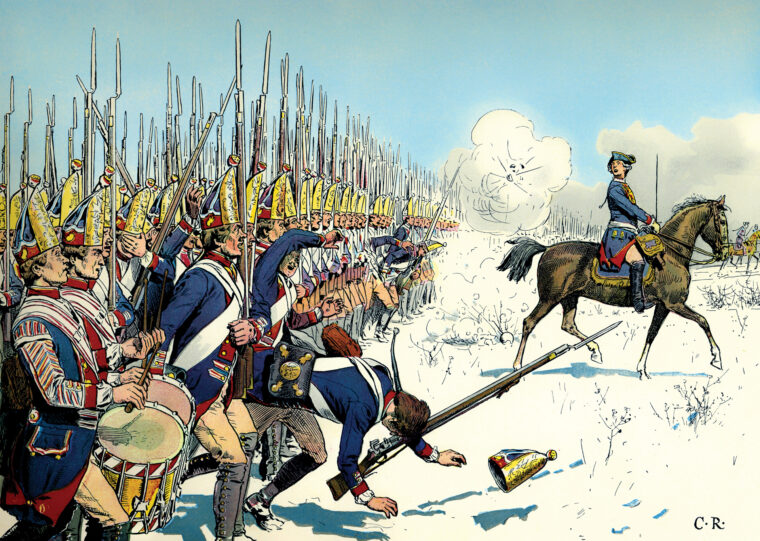
In the early afternoon of December 5, 1757, the men of Prussia’s 26th Infantry Regiment were drawn up in assault formation just south of the Silesian village of Leuthen. Read more

In AD 451, Attila the Hun, by then known to terrified Western Christians as the “scourge of God,” crossed the Rhine River in command of a multi-ethnic army. Read more
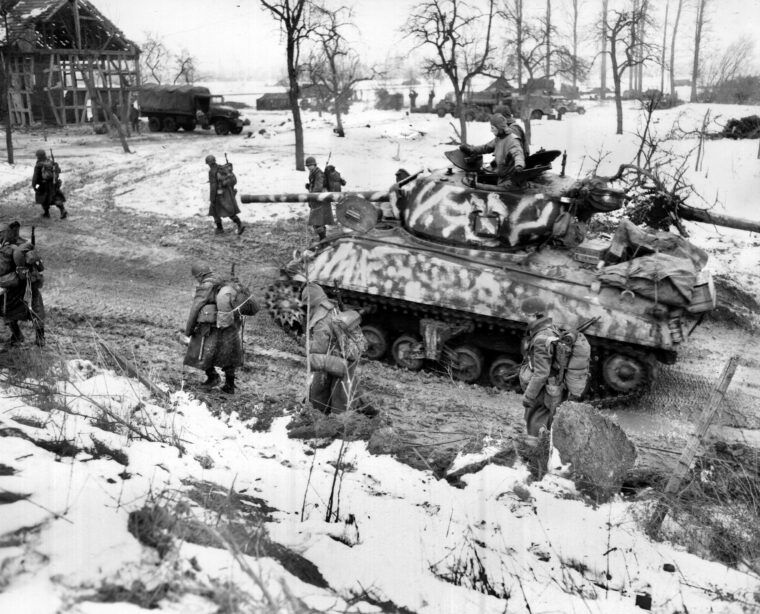
By Christopher Miskimon
On January 25, 1945, every officer in Company B of the 15th Infantry Regiment of the American 3rd Infantry Division became a casualty in the fight for the “Colmar Pocket” except Lieutenant Audie Murphy. Read more
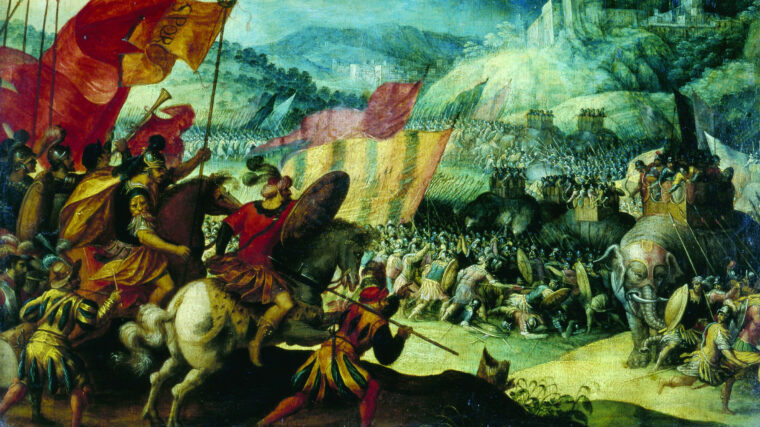
Although Hannibal Barca has rightly been hailed as one of history’s greatest military commanders, his reputation for greatness is based largely on his performance in the first three years (218-202 bc) of the 16-year conflict known as the Second Punic War. Read more
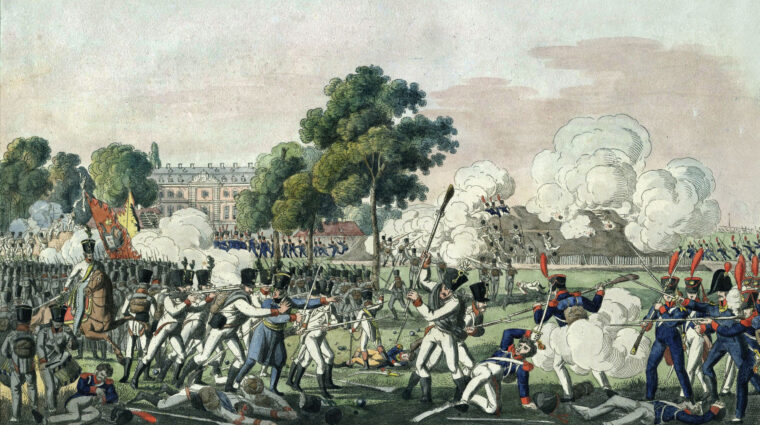
Marshal Gouvion Saint-Cyr was in a tight spot, and he knew it. It was the morning of August 26, 1813, and Saint-Cyr and his French XIV Corps were defending Dresden, the capital of Saxony, from a large and menacing Allied army that outnumbered his own by at least four to one. Read more
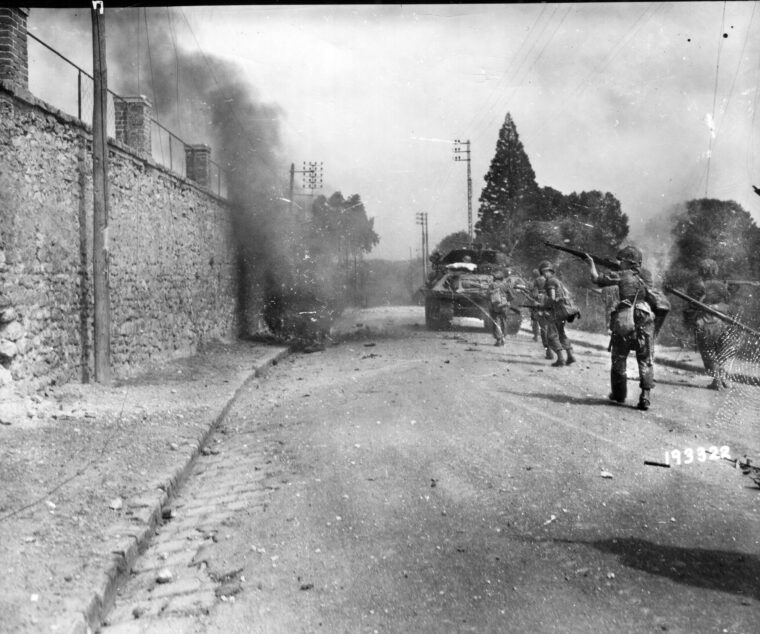
On August 14, 1944, Lt. Gen. George S. Patton, Jr., paused after his daily staff conference to offer a short speech about the accomplishments of his Third Army. Read more
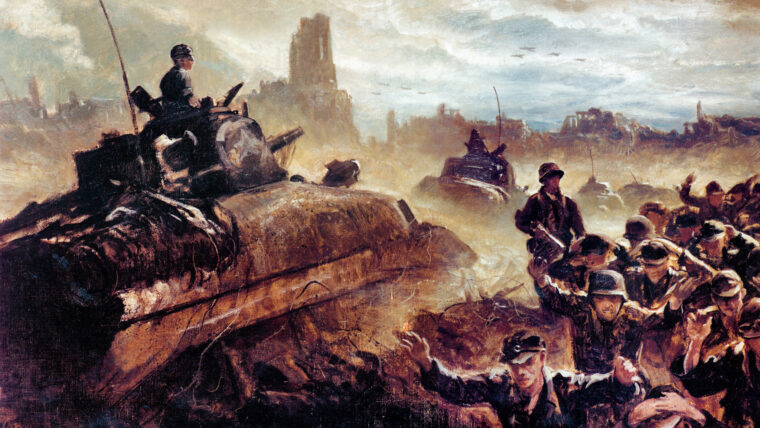
The Allied planning for Operation Overlord had been ongoing for more than two years. Vast quantities of supplies and hundreds of thousands of fighting men and their machinery of war had crowded southern England. Read more
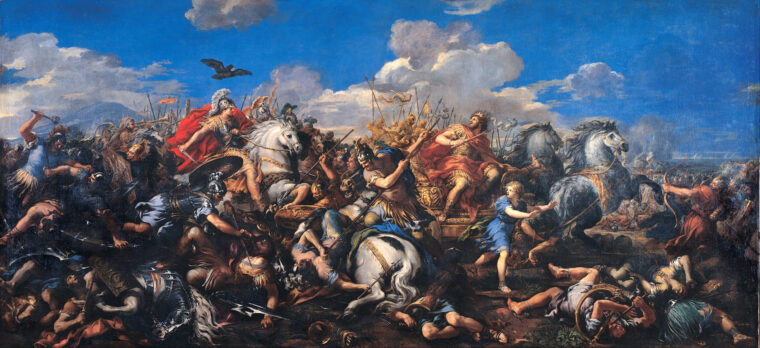
It was nighttime, and a great battle was soon to be fought at Gaugamela, in the dusty plains and rolling hills of modern-day northern Iraq. Read more
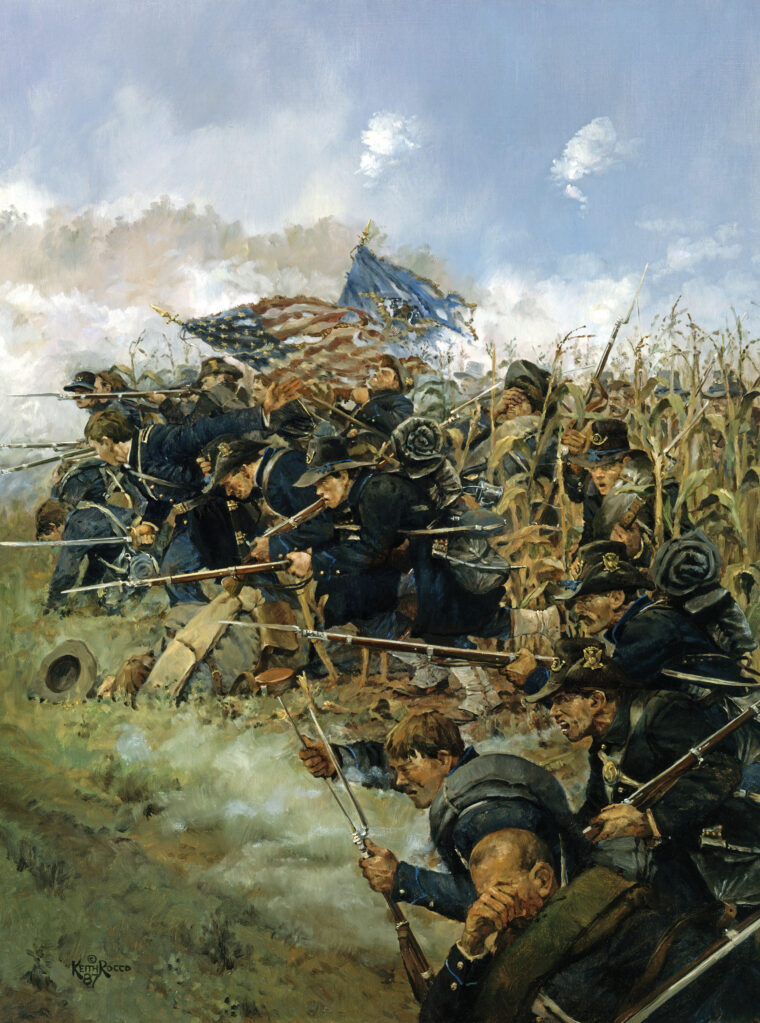
Two men rode forward from Sharpsburg, Maryland, on the morning of September 17, 1862. The one in front was of slight build with a scraggly beard, scrawny neck, sunken cheeks, and a high forehead. Read more
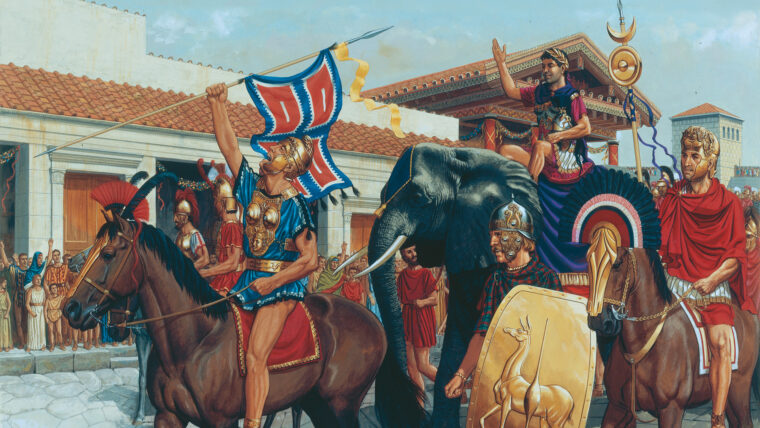
When still a young boy, Hannibal once came upon his father, the Carthaginian general Hamilcar Barca, who at the time was preparing to go to Iberia where Carthage was campaigning to expand its power. Read more
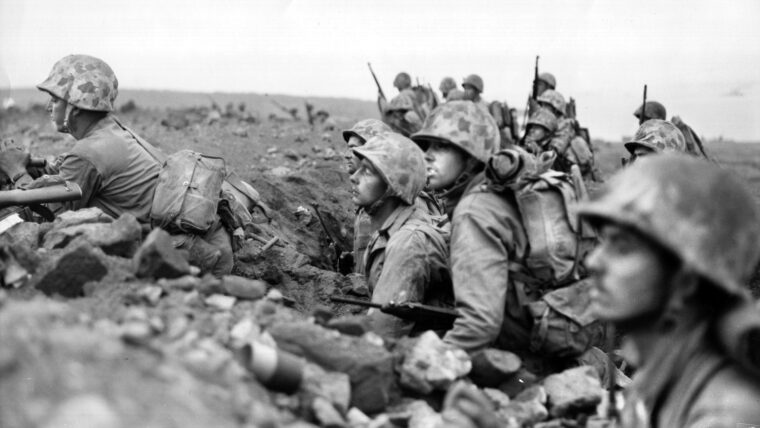
The Boeing B-29 Superfortress bomber nicknamed Dinah Might struggled to stay in the air on the afternoon of March 4, 1945. Read more
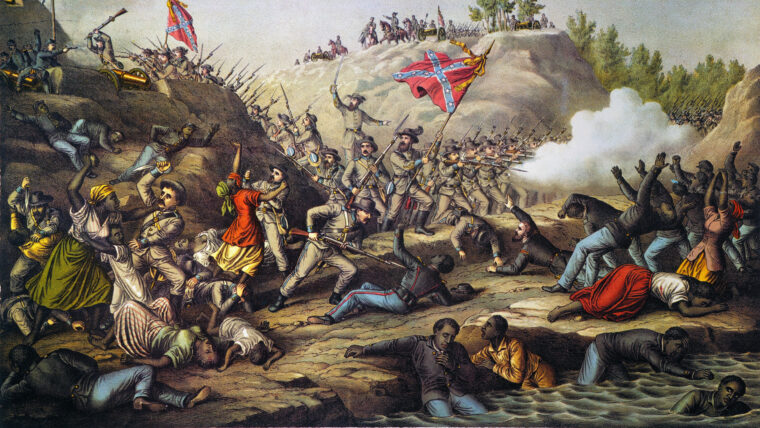
As dawn broke on April 12, 1864, the Union garrison manning Fort Pillow, a small redoubt on a cliff overlooking the Mississippi River in West Tennessee, found itself surrounded by 1,500 Confederate cavalrymen led by Maj. Read more